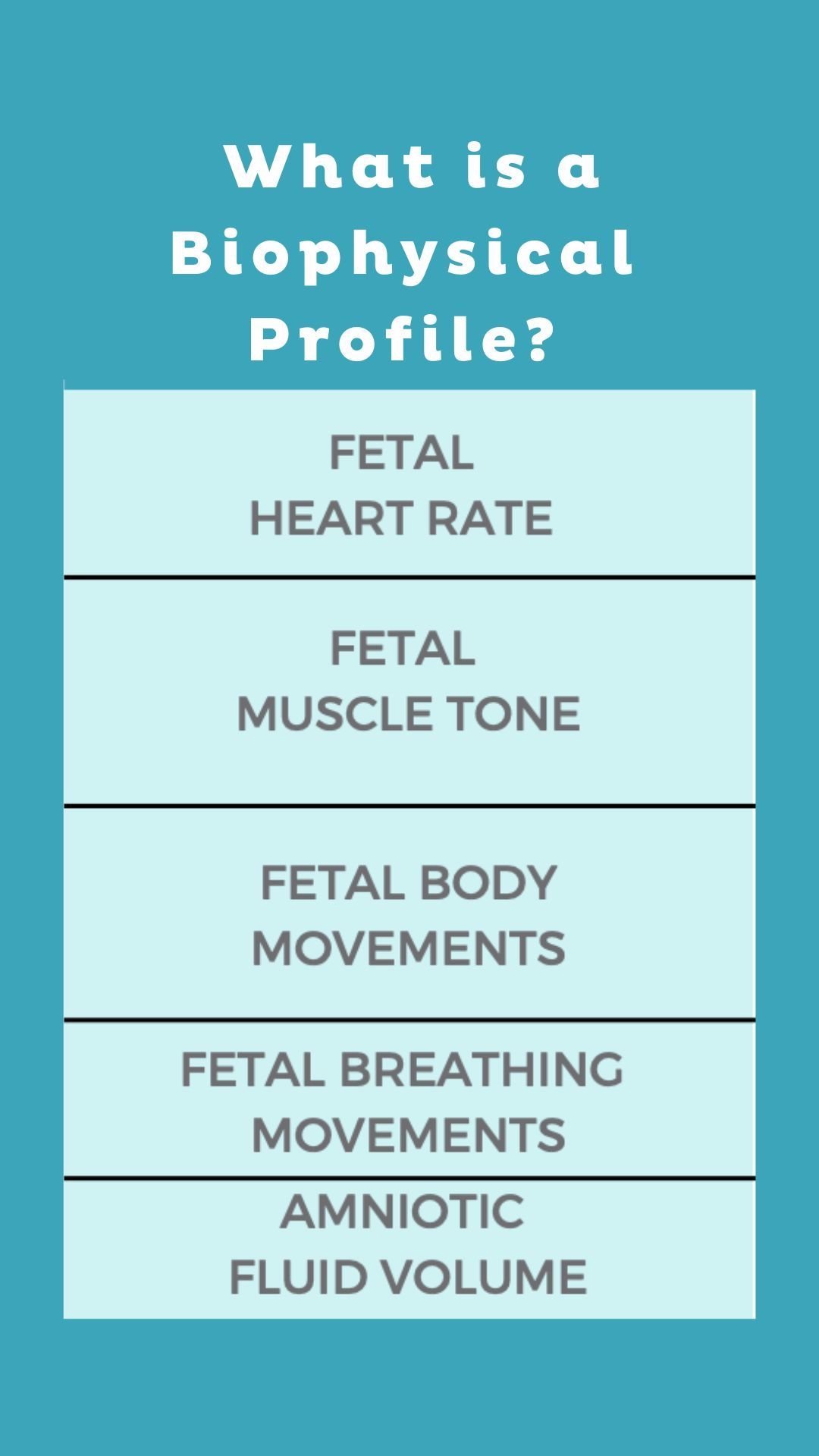What is a Biophysical Profile test in pregnancy?
What is this prenatal test and why am I having it done?
Your care provider may order this test if you are past your due date or there are reasons that make you or your baby “high risk”. A BPP test will likely include a 20 minute non-stress test (NST) with electronic fetal heart monitoring. The BPP measures 4 additional areas by ultrasound: fetal muscle tone, fetal movement, breathing movements, and the amount of amniotic fluid around your baby. A BPP is commonly done in the last trimester of pregnancy, usually after you have hit your due date. Each of the categories are given a score from 0 or 2 (there is no score of “1”) and taken over a time of 30 minutes. A total score of 8-10 means that your baby is “healthy” and doing well. If your score is 6 is considered “equivocal” or uncertain and your provider may bring you back to reassess 24 hours. If your baby has a score of 4 or less, you will likely be induced for delivery.
Let’s look at what happens in a BPP:
Fetal Heart Rate
This part is done with a Non-Stress Test (NST) by placing two belts around your waist and is often done before the Ultrasound part of the BPP. One of the nurses in your practice will put these belts on and monitor your NST. One of the belts measures any contractions and the other measures your baby’s heart rate. Once in the US room, the ultrasound tech will also be able to see your baby’s heart rate AND how your baby’s heart rate changes with movement. They are looking to see if it it speeds up with movement or does it slow down inappropriately? How does it react to stimuli.
Fetal Muscle Tone
Do you feel your baby make active movements? Do they flex and extend their arms? Do they open and close their little fists? This part of the BPP assesses if they are making these appropriate movements with their limbs. An active baby makes quick little punches and kicks! I know that you feel those!
Fetal Movement
This is a measurement of how often does your baby move over a 30 mins period of time. The ultrasonographer will count these movements and they are looking for at least 3 discrete movements. Sometimes, your baby is “sleeping” and the ultrasonographer will try to “wake” baby up! During the Heart Rate assessment part (the non-stress test), you may be given a button to push every time your baby moves or kicks.
Fetal Breathing Movements:
Your baby doesn’t actually “breathe” while in utero but they do swallow amniotic and “breathe” it into their lungs. At birth, their lungs are full of amniotic fluid that gets squished out as they go through the birth canal or as they come out during a cesarean birth. Inspiration starts as a Hiccup which stimulates baby to “breathe" in. These fetal breathing movements (FBM) may be seen as early as 10 weeks when fetus is “inhaling” amniotic fluid and are present 40-50% of the time in the last 10 weeks of pregnancy. Most baby’s lungs are mature by 36 weeks. The ultrasonographer will watch these movements for at least 30 seconds.
Interesting fact: Formation of the diaphragm is complete by 10 weeks gestation.
Amniotic Fluid Levels (AFI - Amniotic Fluid Index)
This is a measurement of how much fluid there is around your baby. The measurements are taken in pockets of fluid in each quadrant of the uterus and are measured in total centimeters of all pockets. Normal levels of amniotic fluid are between 5 cm and 25 cm. Less than 5 cm of fluid is considered to be Oligohydramnios (too little fluid) and greater than 25cm is Polyhydramnios (too much fluid). There can be medical reasons for both that will be followed carefully by your provider.
Another Fun Fact: Did you know that your baby’s amniotic fluid is mostly fetal urine?!
Expecting? Consider taking a 4TFM class!
References:
Lord, M., Marino, S., & Kole, M. (2017). Amniotic fluid index.
https://www.chop.edu/conditions-diseases/biophysical-profile-bpp
https://www.webmd.com/baby/bpp-biophysical-profile



